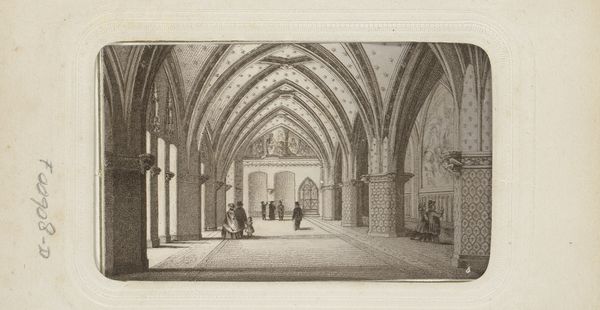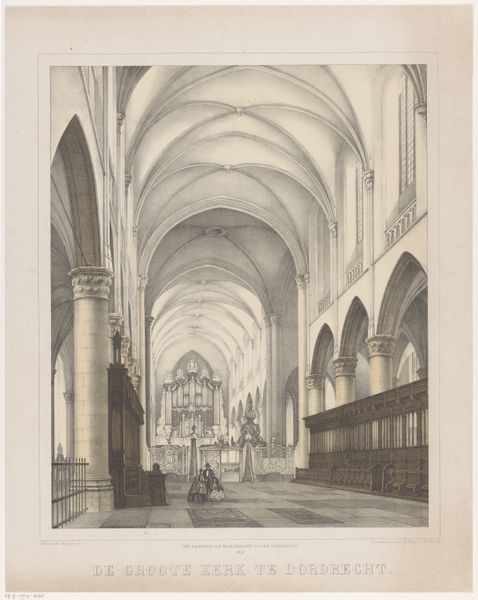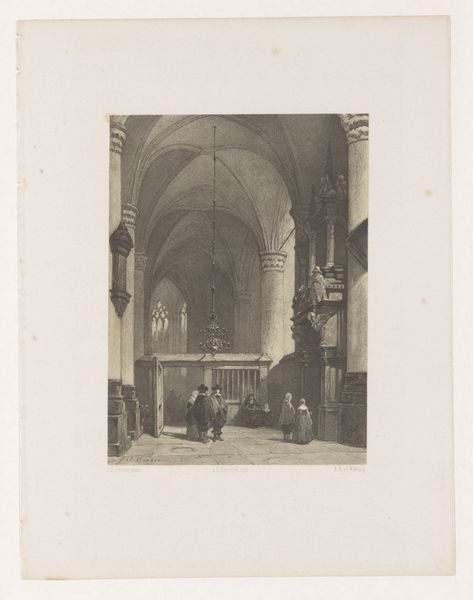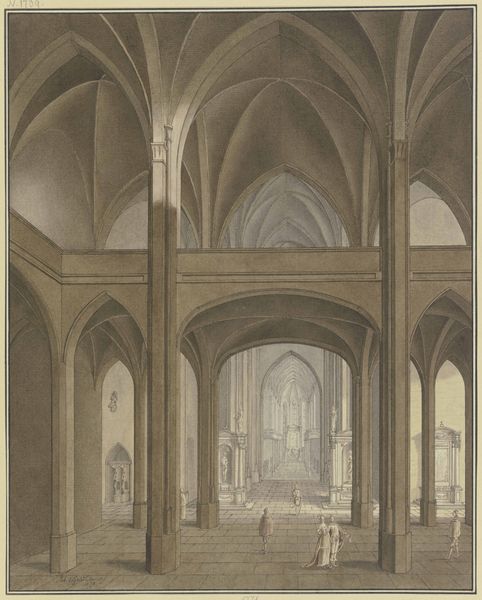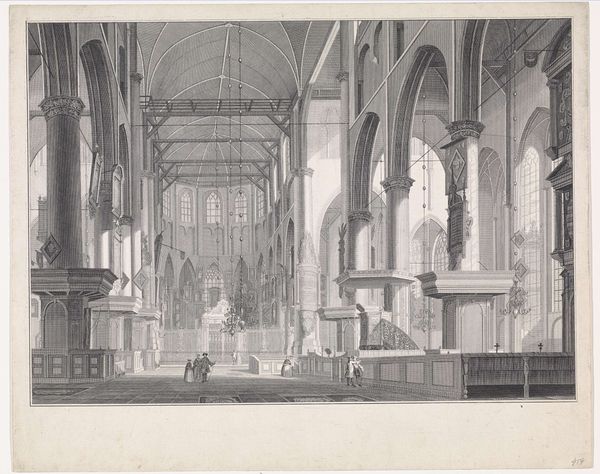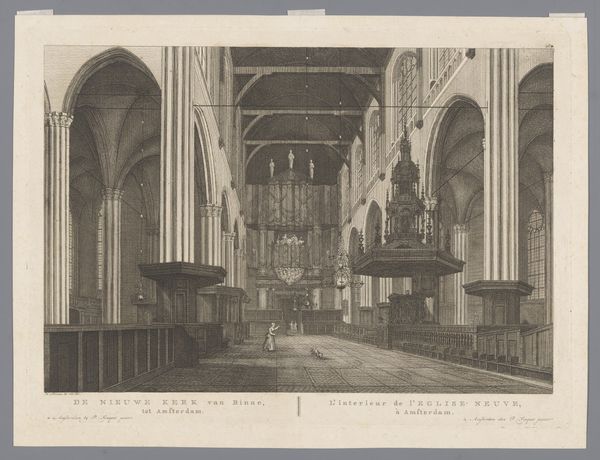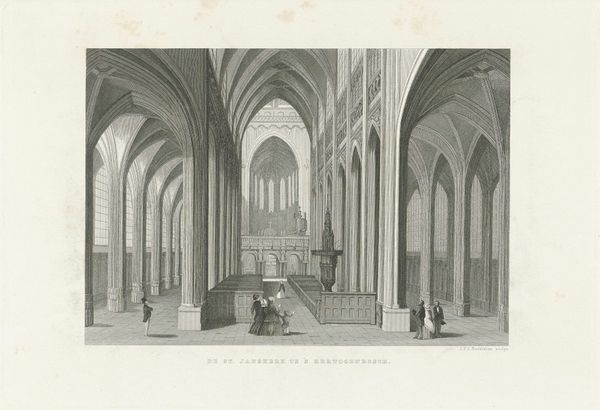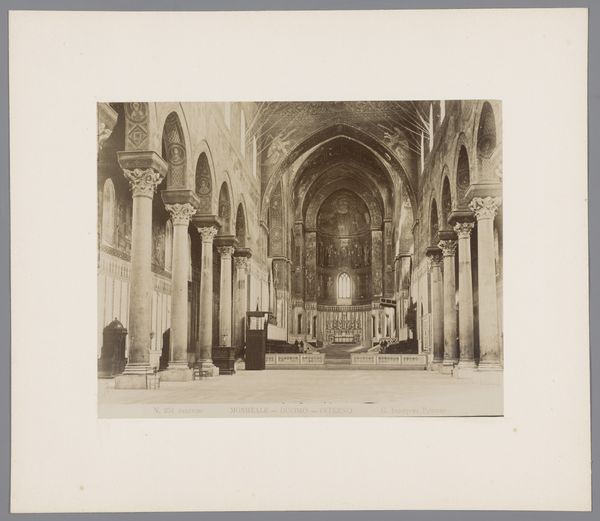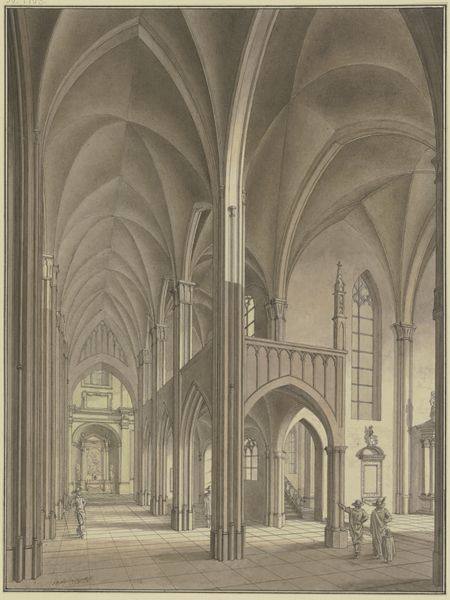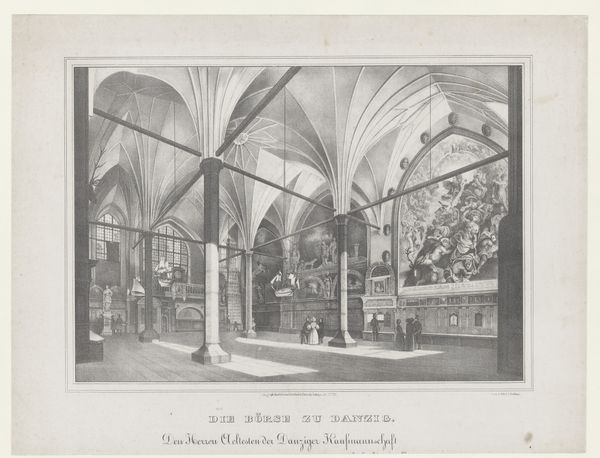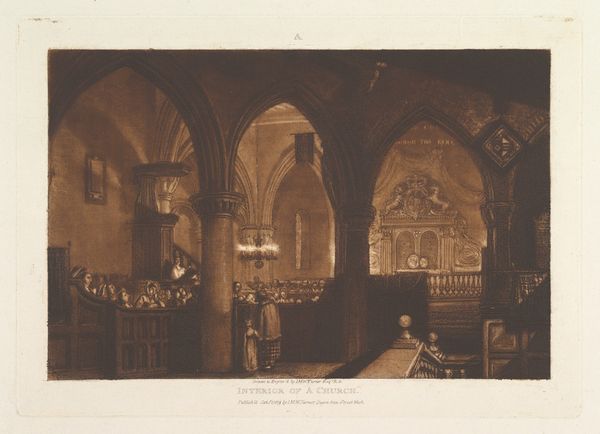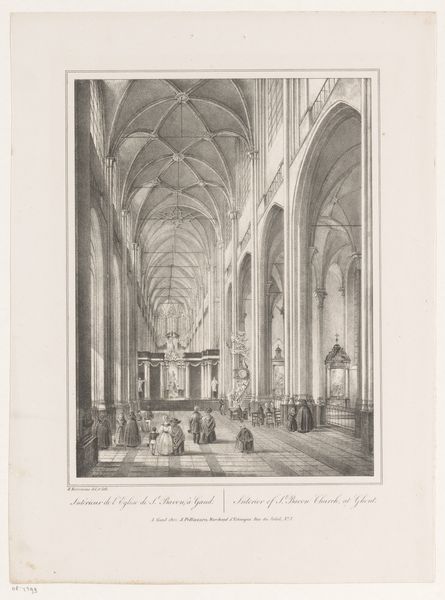
drawing, print, engraving, architecture
#
drawing
#
16_19th-century
# print
#
landscape
#
historical photography
#
romanticism
#
19th century
#
engraving
#
architecture
Dimensions: height 146 mm, width 205 mm
Copyright: Rijks Museum: Open Domain
Editor: We're looking at "Interior of Amstelkerk in Amsterdam" by Johannes Hilverdink, an engraving from 1844. It has a ghostly quality, almost like a photograph from another era. What strikes you when you look at it? Curator: Well, beyond the captivating precision of the architecture, I'm drawn into the hushed reverence. Can you feel that vast emptiness filled with silent expectation? Hilverdink wasn't just recording stone and light; he was painting the soul of a place. It feels as if the Amstelkerk is more than a building - it's a memory holding space for some significant communal and intimate experience. What do you imagine happening in a space like this? Editor: I imagine community, like a meeting place. You mentioned reverence, do you get the sense that Hilverdink felt similarly? Curator: Absolutely! Consider the Romantic era, where emotion and the sublime reigned supreme. Buildings weren’t just structures; they embodied history, spirituality. I can feel that, almost a kind of stage where daily lives met the grand theater of the eternal. Did Hilverdink ever consider it could capture even daily experiences of people praying? Editor: You make a really interesting point... I see what you mean, seeing the engraving through a different, Romantic lens! I thought of it more in architectural terms initially. Curator: And that’s the beauty of art, isn’t it? Different avenues open up different pathways for our vision! Thank you for sparking these conversations, it's a new world for me, too. Editor: I agree! This has broadened how I perceive architectural art.
Comments
No comments
Be the first to comment and join the conversation on the ultimate creative platform.
